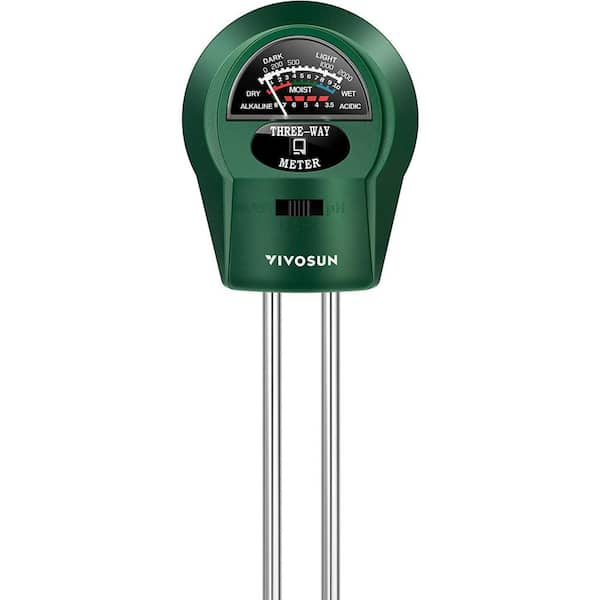The Science Behind Moisture Meters: How They Function and Why They're Crucial
The Science Behind Moisture Meters: How They Function and Why They're Crucial
Blog Article
Comprehending the Significance of a Moisture Meter in Preventing Mold and Water Damages in Your Home
In the world of home upkeep, the presence of dampness can usually be a quiet yet formidable opponent, capable of causing prevalent mold development and insidious water damages if left unattended. Amidst the relaxing ambiance of a house, hidden dampness problems can brew underneath the surface, posturing a hazard to both residential or commercial property and wellness. Furnished with the right devices and knowledge, property owners can proactively battle these potential risks. Recognizing the significance of a wetness meter in this fight is not merely a choice yet a strategic requirement.
Importance of Moisture Detection
Efficient moisture detection methods are important for securing residential or commercial properties and stopping possible mold and mildew development and water damage. Wetness can leak into various building materials, leading to structural issues and carcinogen. By making use of a moisture meter, property owners can proactively identify areas susceptible to excess moisture, enabling timely treatment and reduction techniques.
Moisture meters give accurate readings of moisture levels in different materials such as drywall, concrete, and timber. This information aids in pinpointing areas of worry, also in hidden or hard-to-reach areas. Early discovery of wetness accumulation makes it possible for prompt fixings or adjustments to avoid additional damages.

How Moisture Meters Job
Wetness meters play a critical role in the proactive identification of excess dampness, aiding in the avoidance of potential mold and mildew growth and water damages by offering exact readings of dampness levels in numerous building materials. These tools function based upon different principles, depending upon their kind. Moisture Meter. Pin-type wetness meters, as an example, have two pins that pass through the product to gauge the electrical resistance in between them. When moisture is existing, it enhances the material's conductivity, bring about a lower resistance reading. Pinless dampness meters, on the other hand, usage electromagnetic sensing units to check the product without causing damages. These sensing units discharge electromagnetic signals that permeate the product and determine the dielectric residential properties, indicating moisture material. Some progressed moisture meters pin both integrate and pinless modern technologies for extensive wetness discovery. Recognizing how moisture great site meters function is crucial for timely and precise dampness degree assessments, allowing efficient preventative actions against mold and water damage.
Detecting Early Warning Signs
Upon initial assessment of a property, acknowledging refined indicators of excess wetness comes to be vital in the very early detection of prospective mold and mildew growth and water damage. Water discolorations can signal leaks or seepage, while peeling off paint or wallpaper might be an outcome of moisture jeopardizing the adhesion of these materials to the surface. In addition, a rise in allergy signs or respiratory problems amongst passengers might suggest the existence of mold due to excess moisture.
Avoiding Mold Growth
Recognizing early caution signs of excess moisture within a property not only makes it possible for prompt detection of prospective mold and mildew development and water damage but likewise offers as an aggressive measure in avoiding the expansion of mold and mildew. To effectively avoid mold development, it is critical to address any sources of wetness immediately.
Keeping an eye on dampness degrees in locations susceptible to wetness, such as cellars and crawl spaces, using a dampness meter can also assist in early discovery of elevated dampness levels and potential mold development - Moisture Meter. By taking proactive measures to prevent excess dampness and mold and mildew growth, house owners can safeguard their building and interior air quality.
Advantages of Regular Tracking
Normal surveillance of dampness levels in a property can play a critical duty in maintaining a healthy interior environment and avoiding possible mold and mildew and water damages. By frequently checking moisture degrees, homeowners can identify any concerns quickly and take essential actions to prevent mold and mildew growth and water damage.
Furthermore, normal tracking allows house owners to track patterns and patterns in moisture levels over time. Inevitably, the constant tracking of dampness levels equips homeowners to protect their building, secure their health and wellness, and protect the honesty of their interior atmosphere.

Final Thought

By making use of a dampness websites meter, residential property proprietors can proactively recognize locations vulnerable to excess moisture, allowing for timely treatment and mitigation techniques.

Monitoring moisture degrees in locations vulnerable to moisture, such as basements and crawl areas, utilizing a wetness meter can also aid in early discovery of raised dampness degrees and prospective mold growth. (Moisture Meter)
Report this page